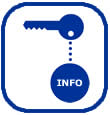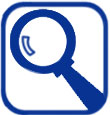 Elements of Expository Text
Elements of Expository Text
The following text structures can be found in both narrative and expository text:
- description - main idea and details
- sequence of events - order in which things happen
- effect - the results of specific actions
- enumeration - a listing of terms in no specific order
- problem/solution - problem and one or more solutions
- classification - dividing into categories
- compare/contrast - looking at likenesses and differences
You will need to introduce each structure using a simple text, then use specific examples within your content area text. Each text structure usually contains some "cue words" to help identify the structure. A sample of these "cue words" can be found at Five Expository Text Structures and their Associated Signal Words.
Focusing the Lens
Ms. Smith and her history class are in a unit of study about California history. Today, they are learning about the Gold Rush. As a class, she asks students to help her determine a timeline of events for this period of Californian history. Once the timeline is complete, she breaks her class into small groups which are to compare the class' timeline with the one in their book. Using cue words, each group constructs a corrected timeline to hand in.
In the above vignette, which learning preferences is Ms. Smith working with during this lesson? What could she do to include other learning preferences? Which Intelligent Behaviors is she modeling for her students? What would you do differently?
